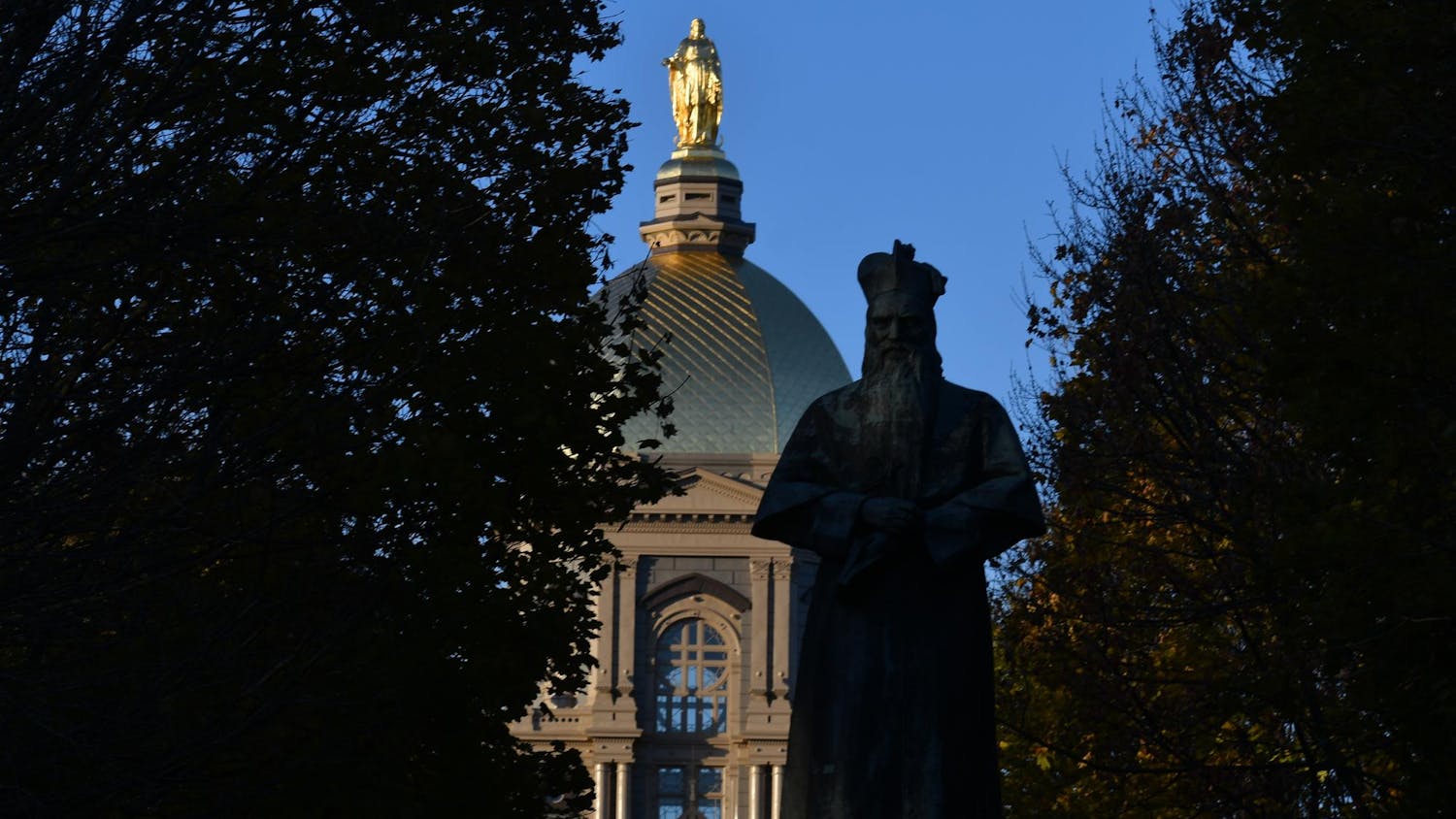Notre Dame early restrictive action decisions came out Dec. 16. At an acceptance rate of 17.3%, 1,675 applications were accepted into the class of 2026 out of a total of 9,687 students who applied — a marked increase from 7,744 applications received the previous year. 
Restrictive early action (REA) students cannot apply early binding decision to other schools, but it is not mandatory that they enroll after being accepted to the University, said Don Bishop, the associate vice president for undergraduate enrollment.
Typically, Bishop said, the REA applicant pool represents the “highest-caliber students” because potential applicants are instructed to only apply REA if they are certain that their application is the strongest it can be.
Although the overall number of REA acceptances has stayed relatively stable, Bishop reported that the University is up 10% for both first-generation, low-income students and students of color among REA admissions.
Notre Dame has made it a priority to seek out marginalized high-achieving students, Bishop said.
“One of the real conversations that's been going on in America over the last 10 years is how can universities claim to be these vibrant places of learning if they exclude large percentages of the American population in that enterprise and we, the top colleges, realized that we needed to do a better job of making our schools more accessible,” Bishop said. “It is a competitive issue as well as, I think, a compassion issue, and nobody should out-compassion Notre Dame.”
Bishop said he believes it is important for Notre Dame to continue making strides to show the values it upholds and the way it deals with the changing world.
“Notre Dame, over the next 10 to 20 years, will get to make a lot of choices and exercise its success, but we need to exercise our success to demonstrate our character,” he said.
In keeping with this commitment to diversity, Notre Dame participates in QuestBridge, a matching system between high-achieving, low-income students and the nation’s top universities. Bishop said that 86 QuestBridge scholars were matched with Notre Dame this admissions cycle and will receive a full scholarship to the University.
Out of the 9,687 REA applications, 1,599 students, or 16.5% of the application pool, were deferred — meaning their applications will undergo another round of review alongside the other regular decision applications.
Christy Pratt, director of undergraduate admissions, said that the decision to defer students comes about organically, not stemming from any quotas.
“We’re very responsible with the number of students that we are nominating to put on that deferred waiting list because we know that being on the deferred list is hard,” Pratt explained. “To some schools, that defer list is almost like a courtesy, but for us, we’re putting a student on a deferred decision because that means there’s something there.”
Notre Dame was one of many schools that went test-optional during the admissions cycle for the class of 2025. The University is now in year two of a three-year pilot program of being test optional, Bishop said.
In this year’s REA application pool, 50% of applicants went test-optional, an increase compared to 31% in last year’s REA pool. The test-optional students accounted for 30% of accepted applications.
Pratt said that even before COVID-19, Notre Dame had been considering going test optional because the admissions counselors found that test scores weren’t making much of an impact due to the holistic review process that applications undergo.
The pilot program will allow the University to “do our due diligence and do the evaluation of how did that play out, not only within our admissions process, but then also how are the students performing at the University,” Pratt said.
Notre Dame admissions is now entering a period of consideration for the regular decision applications. Bishop said they received a record number of 26,500 applications, up 12% from last year’s 23,642 applicants.
Bishop said he feels that increase may have had something to do with Notre Dame’s response to the COVID-19 pandemic.
“I think in part [the increase in applications], is because of Notre Dame’s reputation that got developed over the last two years, for being more of a community that meets and spends time together. And that’s an attractive identity for today,” he said. “Honestly, it’s the identity we’ve always had.”
Along with the total number of applicants, the number of diverse applications is on the rise. Bishop reported that the University received a 21% increase in first-generation student applications, a 16% increase in U.S. student of color applications and a 32% increase in international student applications.
Bishop estimates that about 13% of the regular decision applications will ultimately be accepted into Notre Dame — a rate constricted by a 2,050-student cap on the incoming class.
Notre Dame admits 1,675 students via early admission to the class of 2026
Seventeen percent of the record setting number of early action applicants were accepted to the University this admissions cycle.
Over 17% of a record-setting number of early action applicants were accepted to the University this admissions cycle.









